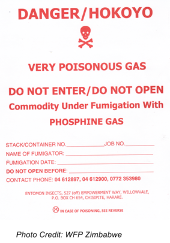- What We Do
- Agriculture and Food Security
- Feed the Future
- Food Assistance
- Agricultural Markets and Trade
- Agricultural Capacity Development
- Global Nutrition
- Sustainable Agriculture
- Investing in Agricultural Research and Development
- USAID's Legacy in Agricultural Development
- Democracy, Human Rights and Governance
- Economic Growth and Trade
- Education
- Ending Extreme Poverty
- Environment and Global Climate Change
- Gender Equality and Women's Empowerment
- Global Health
- Water and Sanitation
- Working in Crises and Conflict
- U.S. Global Development Lab
USAID Emergency Food Assistance
USAID emergency food assistance programs will be implemented in accordance with the Automated Directives System (ADS) Part 204.3.10: Environmental Review in International Disaster Scenarios (ADS 204) stipulations for International Disaster Assistance (IDA) and non-IDA funded emergency food assistance activities. When all requisite exemption criteria are met, these activities are exempted under 22 CFR 216, with the exception of the procurement and/or use of pesticides. These exemption criteria are set forth in ADS 204.3.10(b)). For all exempted activities, the standards of “The Sphere Handbook: Humanitarian Charter and Minimum Standards in Humanitarian Response,” apply. (See ADS 204.3). Other guidance on training and assessment includes American Red Cross and the World Wildlife Fund (WWF) Green Recovery and Reconstruction Toolkit (GRRT) and the Rapid Environmental Assessment (REA) approach.
For emergency food assistance projects that are multi-year, the regular USAID development food assistance requirements for environmental compliance will apply.

Safe and Effective Fumigation
All USAID emergency food assistance projects must protect valuable, life-saving agricultural commodity from insect infestation in warehouses in ports and distribution points globally. To do so, commodity is protected with the highly-effective, but very toxic pesticide phosphine gas. To ensure the safe and effective use of this gas, USAID conducted a Programmatic Environmental Assessment (PEA) for Commodity Protection by Phosphine Fumigation in USAID Food Aid Programs which identified gaps and corrective actions for fumigation at warehouses.







Comment
Make a general inquiry or suggest an improvement.